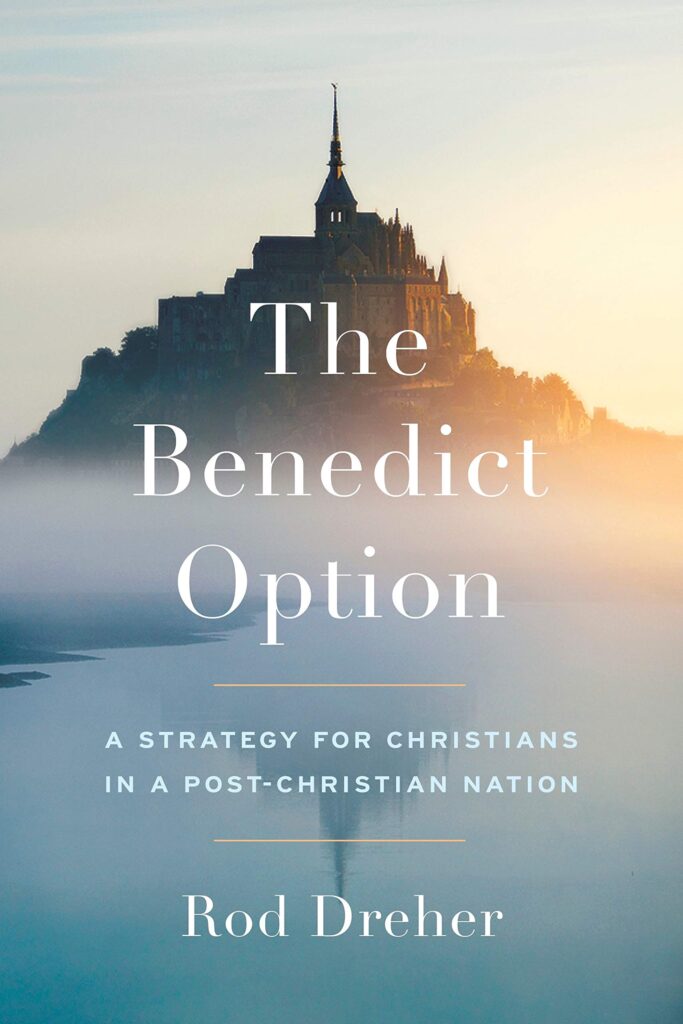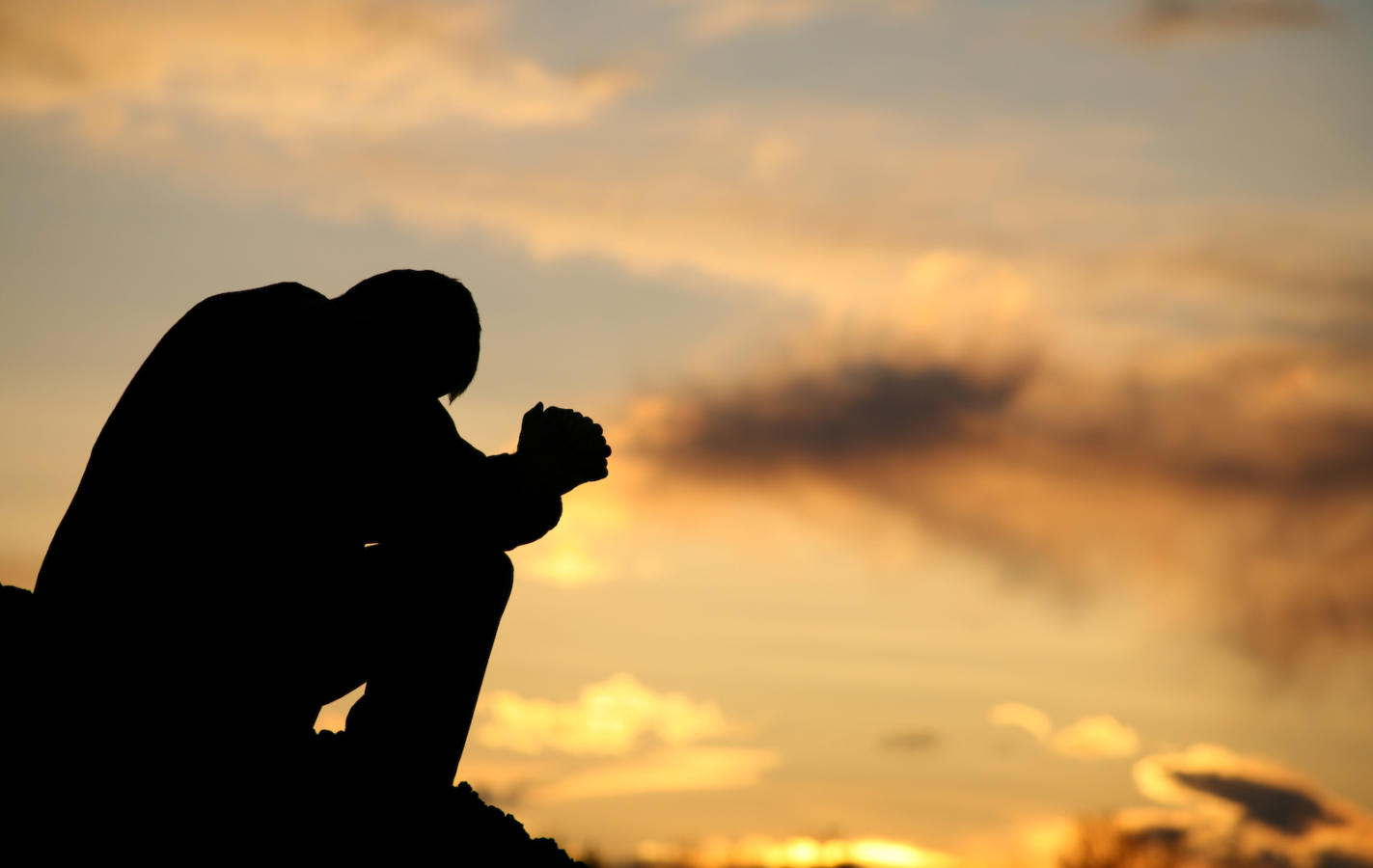I’m a big underliner when I read.
And I’m reading a book right now called The Benedict Option that won’t allow me to put down my pen. (Quick aside: I believe every Christian should always be reading a book for secondary study to deepen their faith. Our primary reading should be of Scripture itself in our daily quiet time where we learn and hear from God. Nothing should replace this! But once this habit is intact, secondary reading is essential. Leaders are readers, as we like to say.)

Written by Rod Dreher, a voice I am listening to with greater frequency, it’s a book filled with wisdom about how to follow Christ in a culture that is growing increasingly hostile to Christ.
Benedict was a sixth century monk who founded a movement of monasteries during a time of cultural decay when the Roman civilization was collapsing and what would replace it was yet unknown. The ascetic life of the monastery was built around a life of order, governed by “Rules”, and the Benedictine order is practiced to this day.
Dreher spent time in a Benedictine monastery, and wrote his book convinced that the modern Church needed to recover something of the Benedictine spirit to survive the cultural convulsions that are already shaking our world.
So much of what he observed of Benedictine practices echoes the same themes we are thinking about right now in our study of Emotionally Healthy Spirituality. Pastor Pete Scazzero reminds us again and again in his book that the best path forward toward Christlikeness and emotional health is found in a practice of faith known historically as “contemplative spirituality”. (On the Mary-Martha spectrum of faith, contemplative spirituality is the Mary side, whose instinct is to sit quietly at the feet of Jesus before plunging into activity. Be-Do, if you recall last Sunday’s sermon.)
“If we spend all our time in activity, even when that activity serves Christ, and neglect prayer and contemplation, we put our faith in danger.”
Rob Dreher
In an astounding chapter, “A Rule For Living”, Dreher summarizes how the Benedictine order revolves around the themes of order, prayer, work, asceticism, community, hospitality, and balance.
Because of its parallels with Emotionally Healthy Spirituality, and because in March during Lent we are going to focus intently on prayer as a congregation, let me share some of the things Dreher says he learned about prayer from his time in the monastery. I’ll let his quotes, and the quotes of some of the monks he interviews, just speak for themselves.
I think you’ll agree with me that these ideas mesh perfectly with what the Lord is teaching us in this season at BridgeWay. If you’re an underliner like me, print this off, get out your pen, and start highlighting the thoughts here that speak to your heart.
Thoughts on Prayer
“If a defining characteristic of the modern world is disorder, then the most fundamental act of resistance is to establish order…To order the world rightly as Christians requires regarding all things as pointing to Christ…Benedict instructs his monks to keep their minds focused on the presence of God…Everything is directed to God. Everything has to be seen from the supernatural point of view. The radiance that comes through our lives is only a reflection of God. In ourselves we are nothing.”
“[The radiance of our lives] is a fruit of deep and constant prayer…Strictly speaking, prayer is communication with privately, or in community, with God. More broadly, prayer is maintaining an unfailing awareness of the divine presence and doing all things with him in mind.”
“Seven times each day they gather around the altar of basilica to chant the appointed prayers for the Divine Office, also known as the Liturgy of the hours…These consist of psalms, hymns, Scripture readings, and prayer. For the monks, prayer is not simply words they speak. Each monk spends several hours daily doing…a Benedictine method of Scripture study that involves reading a Scripture passage, meditating on it, praying about it, and finally contemplating its meaning for the soul. The idea is not to study the Bible as a scholar would but rather to encounter it as God speaking directly to an individual.”
“We sing when we pray, we stand, we sit, we bow, we kneels, we prostrate…The body is very much involved in prayer. It’s not just some kind of intellectual meditation.”
“Prayer is not so much about asking God for things as about simply being in his presence.”
From “The Benedict Option”
Dreher shares a story similar to one Scazzero recounts. One of the monks assigned for him to pray the “Jesus Prayer” (“Lord Jesus Christ, Son of God, have mercy on me a sinner”) for an hour each day. Here’s what Dreher writes of the experience: “It was dull and difficult at first, but I did it out of obedience…In time, though, the hour seemed much shorter, and I discovered that the peace I had conspicuously lacked in my soul came forth…The priest explained [why he had assigned him this exercise.] ‘I had to get you out of your head.’ He meant that I was captive to an intellectual tendency to try to think my way out of my troubles.”
“If we spend all our time in activity, even when that activity serves Christ, and neglect prayer and contemplation, we put our faith in danger. The 1960s media theorist Marshall McLuhan, a practicing Christian, once said that everyone he knew who lost his faith began by ceasing to pray. If we are to live rightly order Christian lives, then prayer must be the basis of everything we do.”


